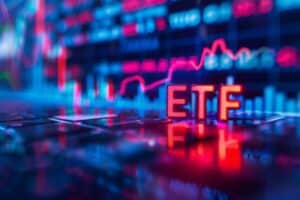Maybe less than you think.

Last week’s Medium-Term Budget Policy statement painted a bleak picture of the state of South Africa’s economy. While the IMF is predicting global growth to rise to 3.6% this year, finance minister Malusi Gigaba revised government’s expectation for local growth downwards to 0.7%.
Treasury doesn’t have great expectations for the next two years either. Gigaba projected growth of 1.1% in 2018 and 1.5% in 2019. That remains below the current rate of population growth of 1.6%.
This is understandably worrying for investors. If there is such weak growth in the South African economy, won’t that translate into poor returns over the next few years?
This is an interesting question, for two reasons. The first is that a number of studies have shown that there is little correlation between a country’s GDP growth and returns on the stock market. In some cases, over some periods, the correlation even turns negative.
However, a study by Schroders in 2013 found that there may be a correlation between stock market performance and expected economic growth. In times where the economy is expected to perform poorly, stock markets are subdued. This would suggest that investors in South African companies are unlikely to see good returns as long as the outlook remains dim.
The second issue for local investors, however, is to consider how exposed they actually are to the South African economy. This is because the JSE has become a very international market. Studies have found that more than 60% of the JSE Top 40’s earnings are generated overseas.
So while it may be true that the share prices of companies operating primarily in South Africa could remain depressed, this isn’t necessarily the case for other stocks listed locally but who earn most of their profits elsewhere.
The majority of South African investors in unit trusts are also invested in balanced, or multi-asset funds. As Dave Mohr, the chief investment strategist at Old Mutual Wealth points out, these portfolios are diversified beyond locally-listed shares to include foreign equity, bonds, property, cash and commodities. This further reduces their sensitivity to the South African economy.
The table below shows the most recently-published asset allocation of South Africa’s four largest multi-asset high-equity funds. Since these funds together account for around 54% of all the money invested in this category, they give a good indication of the exposure that most investors have.

Source: Fund fact sheets
If you average these numbers across the four funds, you get a portfolio that looks like this:

.
To determine an investor’s exposure to weakness in the South African economy, one can obviously remove all the foreign assets, as well as commodities. Cash can also be taken out as it serves as a hedge in the portfolio.
That leaves local equity, local property and local bonds. Bonds usually perform well in a weak economy as inflation typically falls, and interest rates come down. That has already been evident over the last two years, which have seen the local bond market performing quite strongly.
An investor in a balanced fund is therefore left worrying about only South African equity and listed property. However, if JSE earnings are predominantly international, then that means this portion of the portfolio is not fully exposed to South Africa.
If one assumes that 60% of your exposure to the JSE is actually to international businesses, then you are left with the following real exposure to weakness in the South African economy:
Just 19% of this average portfolio is impacted by low economic growth in South Africa. By contrast, just under 50% of the portfolio is exposed to the economic performance of the wider world.
“The ultimate driver of this portfolio is actually global growth,” says Mohr. “Which hopefully means that with the global situation improving, we will see the returns of these funds doing well.”
Brought to you by Moneyweb.







